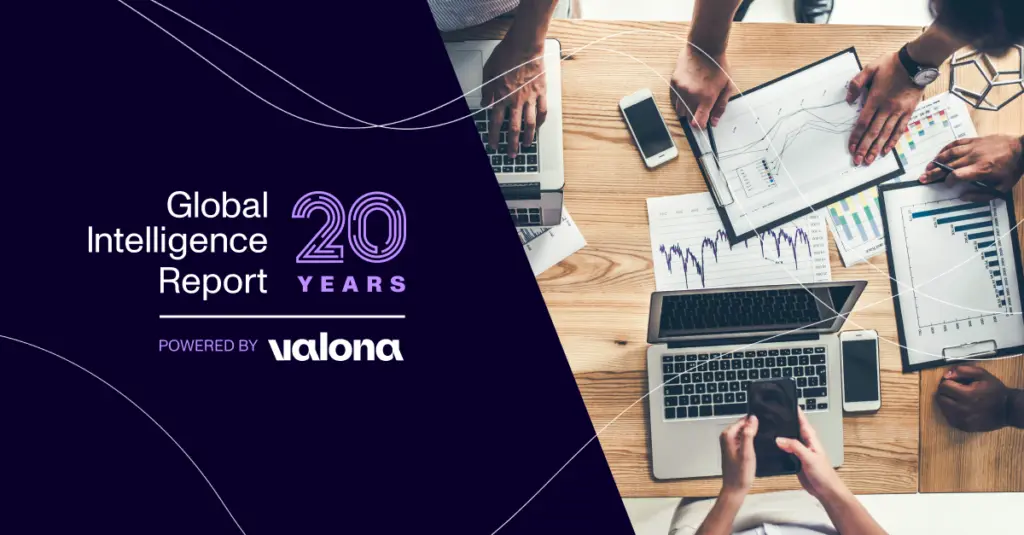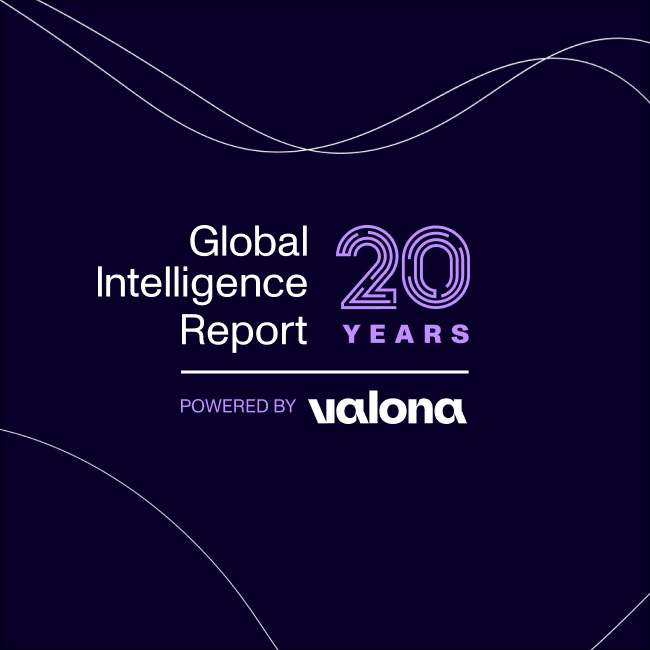
Why Continuous Foresight is Key to Staying Competitive
Discover why continuous foresight is important for staying competitive. Learn how it helps anticipate trends, manage risks, seize opportunities, and drive innovation.
In business, change isn’t optional—it’s constant. Companies that anticipate trends thrive, while those that don’t fall behind. Continuous foresight is the practice of actively scanning for future possibilities to stay ahead. It’s not just planning; it’s about staying adaptable in uncertain markets.
This article explores why continuous foresight matters and how it helps businesses predict and prepare for what’s coming next.
What is continuous foresight?
Continuous strategic foresight is an ongoing strategic approach that helps organizations anticipate and prepare for future trends, disruptions, and uncertainties. Unlike traditional foresight, which is often a one-time exercise, continuous foresight integrates future-oriented thinking into daily decision-making and long-term planning, making organizations more proactive and adaptable.
Key components include data analysis to identify trends, trend monitoring to detect weak signals, and scenario planning to prepare for multiple futures. This structured approach fosters resilience and innovation by enabling organizations to quickly adapt to external pressures and capitalize on emerging opportunities.
“There’s no inherent value in doing foresight unless it leads to impact.”
Panu Kause, CEO of Fibres Online
By embedding continuous foresight into organizational culture, companies minimize biases, reduce reliance on limited information, and move away from reactive decision-making. While it doesn’t eliminate unpredictability, it enhances awareness and equips leaders to act confidently in uncertain environments.
How continuous foresight helps in staying competitive
1. Proactive risk management
Continuous foresight is essential for proactive risk management, allowing organizations to anticipate and address potential challenges before they escalate.
By identifying risks early, businesses can shift from reactive crisis management to strategic preparedness, ensuring greater resilience in an unpredictable market.
Key tools include trend analysis to detect weak signals of change and scenario planning to prepare for multiple possible futures. This approach helps mitigate risks from market volatility, supply chain disruptions, and regulatory shifts.
Embedding foresight into decision-making fosters adaptability, minimizes reactive decision-making, and strengthens long-term sustainability, enabling organizations to navigate uncertainty with confidence and turn challenges into opportunities.
2. Seizing emerging opportunities
Continuous foresight helps organizations stay competitive by identifying and acting on emerging trends before they become mainstream.
By leveraging real-time data analysis and signal detection, businesses can spot weak indicators of change in consumer behavior, technology, and regulations, positioning themselves for early advantage.
“You need to be action-oriented. That’s about connecting with the action so that you really accomplish some impact with this work.”
Panu Kause, CEO of Fibres Online
However, recognizing opportunities isn’t enough—acting quickly is key. First-movers can set industry standards, gain customer loyalty, and secure market share ahead of competitors.
Additionally, foresight drives innovation by uncovering unmet customer needs and new market gaps, ensuring businesses align their strategies with growth opportunities and long-term success.
Want to master the art of strategic foresight and gain a competitive edge? Check out Valona Intelligence’s on-demand webinar to learn how leading organizations leverage continuous foresight to anticipate trends, mitigate risks, and seize emerging opportunities.
3. Faster and smarter decision-making
Continuous foresight enhances decision-making by providing timely and structured insights into future trends. Here’s how it helps:
- Faster decision-making – By analyzing emerging trends, businesses can respond quickly to market changes instead of relying on outdated information or instinct.
- Improved decision quality – Reduces reliance on guesswork, enabling data-driven and strategic choices aligned with long-term goals.
- Increased agility – Consistent trend monitoring helps identify risks and opportunities early, allowing proactive responses.
- Enhanced confidence – Data-backed decisions lower uncertainty and reduce missteps, ensuring clarity in volatile business conditions.
4. Driving innovation and growth
Continuous foresight drives innovation and growth by equipping organizations to anticipate and adapt to change. Here’s how it helps:
- Identifying new opportunities – Detects emerging trends and unmet customer needs, paving the way for innovative products and services.
- Enhancing competitive differentiation – Aligns product development with technological advancements and societal shifts, keeping businesses ahead of competitors.
- Improving agility and adaptability – Enables organizations to pivot strategies in response to market changes while maintaining long-term objectives.
- Ensuring sustainable growth– Aligns innovation efforts with strategic goals, ensuring investments contribute meaningfully to long-term success.
5. Maintaining a competitive edge
To stay competitive in fast-changing markets, organizations must anticipate disruptions and evolving customer expectations.
Continuous foresight enables businesses to identify emerging trends early, allowing them to respond proactively rather than reactively. This approach helps companies pivot strategies and innovate before industry shifts become widespread.
Foresight also drives differentiation by refining strategies to deliver unique products, services, or experiences. It ensures businesses remain relevant by evolving with market conditions.
By continuously adapting and aligning with new insights, organizations can seize opportunities, avoid stagnation, and maintain a strong competitive edge.
Key components of an effective continuous foresight strategy
1. Trend monitoring & signal detection
Monitoring emerging trends and detecting weak signals help organizations stay ahead in a rapidly evolving business landscape.
By identifying early patterns of change, businesses can anticipate market shifts and act proactively, securing opportunities that competitors might overlook.
Weak signal detection, such as early adoption of niche technologies or shifting consumer preferences, offers a crucial first-mover advantage.
To effectively track trends, organizations must use diverse information sources, from industry reports to social media insights.
A continuous, iterative monitoring process ensures alignment with evolving market conditions, enabling proactive decision-making, resource allocation, and risk mitigation before challenges escalate.
2. Scenario planning
Scenario planning is a vital strategy for navigating uncertainty and preparing for multiple potential futures. Here’s how it helps:
- Expands strategic thinking – Encourages consideration of multiple future scenarios instead of relying on a single forecast.
- Incorporates diverse variables – Evaluates economic shifts, technology changes, regulatory updates, and social factors to shape adaptable strategies.
- Strengthens resilience – Identifies strengths and weaknesses by stress-testing strategies against different possible outcomes.
- Enhances decision-making – Helps leaders assess which actions are effective across scenarios, reducing risks of over-commitment.
- Improves adaptability – Ensures organizations can respond proactively to opportunities and threats in a volatile business environment.
3. Data-driven insights
To effectively use data-driven insights in foresight efforts, organizations must ensure data accuracy and clarity. Here’s how to maximize its impact:
- Clean and organize data – Ensures patterns, trends, and anomalies are visible for meaningful analysis.
- Identify actionable insights – Detects shifts in customer behavior and market demands within the broader business context.
- Leverage data visualization – Simplifies complex insights with charts and dashboards for clearer decision-making.
- Segment data effectively – Categorizes information by geography, demographics, or product lines to focus foresight efforts on key areas.
4. Cross-functional collaboration
Cross-functional collaboration enhances continuous foresight by breaking down silos, ensuring insights flow freely and align with broader business goals. By combining diverse expertise from different teams, organizations gain a comprehensive understanding of future opportunities and risks, making foresight initiatives more actionable and strategically relevant.
The benefits of cross-functional collaboration include:
- Richer insights from a combination of specialized knowledge and broader organizational viewpoints.
- Improved strategic alignment by ensuring foresight efforts directly support business objectives.
- Faster response times as shared information accelerates decision-making and reduces redundancy.
- A stronger culture of innovation, driven by the interaction of diverse ideas and expertise.
“You should embrace those future thinkers out there in your organization. You should invite them into a community, allow them to contribute, and show that you take their input seriously.”
Panu Kause, CEO of Fibres Online
5. Agility & iterative learning
Agility and iterative learning are essential for effective foresight strategies, enabling organizations to adapt to changing market conditions.
Agile foresight teams can quickly pivot when disruptions arise, ensuring a proactive rather than reactive approach.
Iterative learning refines foresight over time by integrating feedback and lessons learned, making it a continuous cycle of evaluation and adjustment.
Embracing experimentation fosters resilience and innovation, allowing businesses to explore alternative scenarios and recalibrate strategies as needed.
Regularly updating foresight initiatives ensures alignment with evolving business objectives, keeping strategies relevant and preventing outdated assumptions from hindering competitiveness.
Conclusion
Continuous foresight isn’t just a strategy—it’s a necessity for staying competitive in today’s rapidly shifting business landscape. At Valona Intelligence, we help organizations anticipate trends, seize opportunities, and mitigate risks with confidence.
Our advanced market intelligence software combines AI-driven insights with expert analysis, ensuring you’re always one step ahead.
Want to enhance your foresight capabilities? Check out our on-demand webinar, How Leading Organizations Leverage Continuous Foresight, to discover strategies for staying ahead of market shifts.
FAQ
What is continuous foresight?
Continuous foresight is an ongoing process of anticipating future trends, disruptions, and opportunities to stay ahead in a rapidly changing field.
What exactly is foresight?
Foresight is the practice of anticipating and preparing for potential future developments by analyzing trends, uncertainties, and emerging opportunities.
Is foresight a good thing?
Foresight is important for staying competitive, as it enables organizations to anticipate future trends, adapt to change, and make proactive decisions.
What is foresight thinking?
Foresight thinking is a strategic approach that helps organizations anticipate future trends, challenges, and opportunities.
How can I develop continuous foresight capabilities within my organization?
Developing continuous foresight requires fostering a culture of curiosity and adaptability, integrating trend monitoring into decision-making, and encouraging collaboration across teams.




